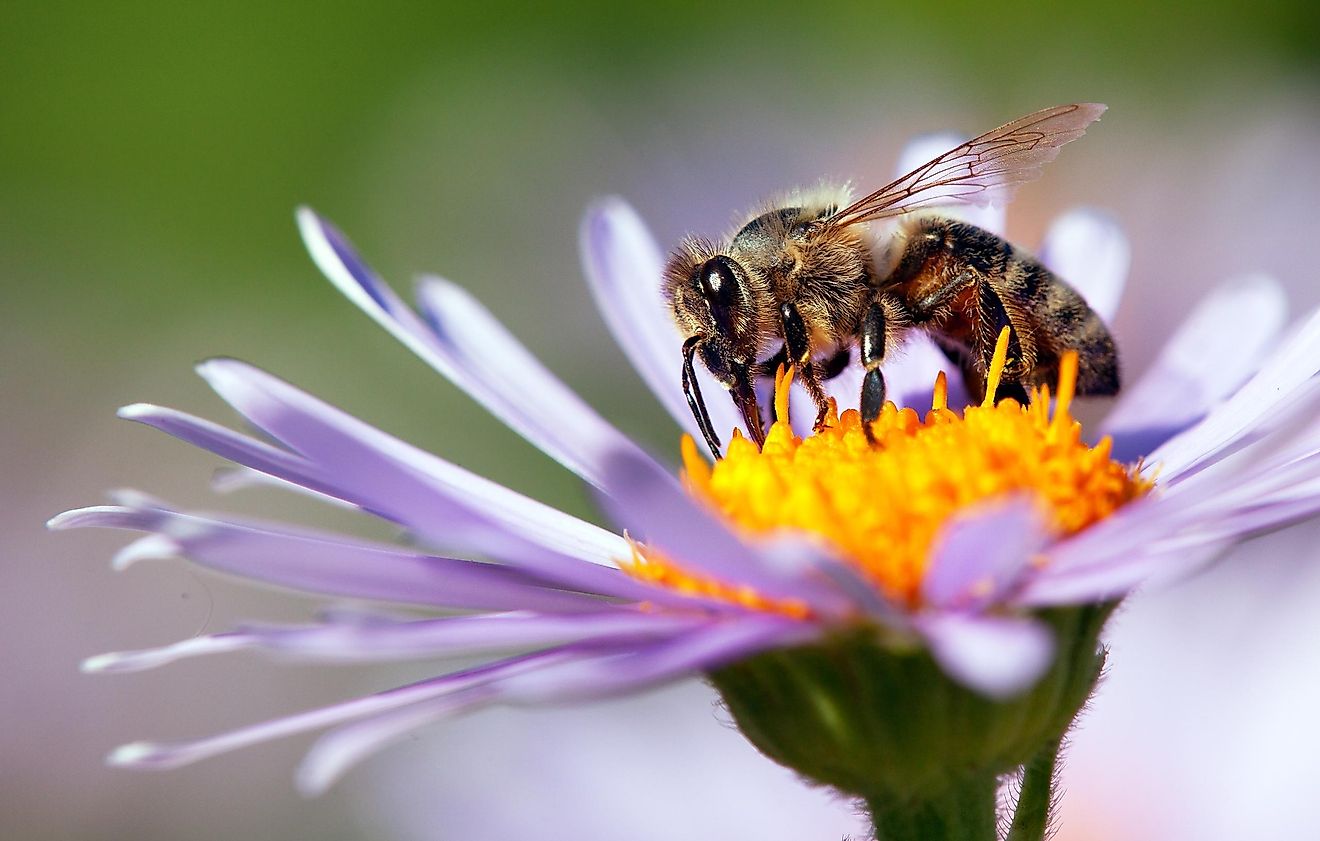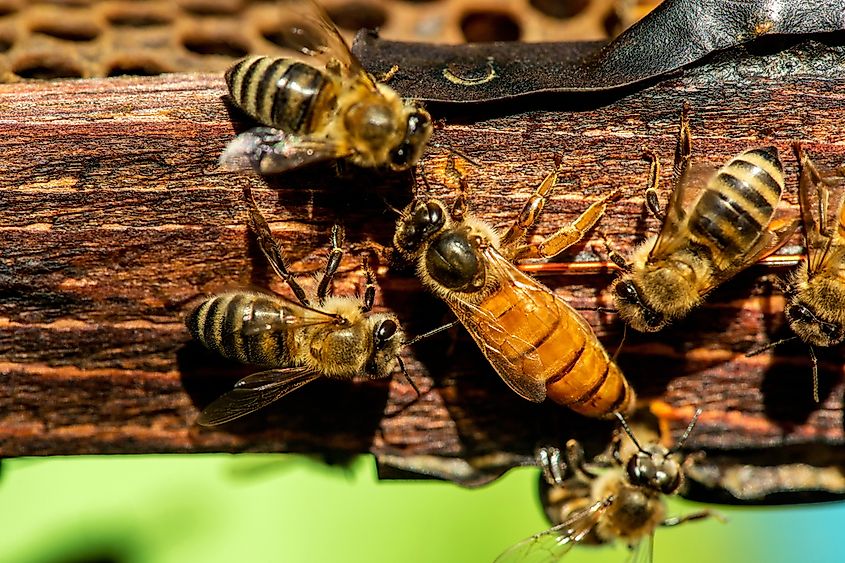How Long Do Honey Bees Live?

Even though honey bees are native to Europe and Asia, humans have spread them throughout other continents. They construct their nests from wax and live in colonies. Because of their production of honey, their nests are often the targets of other animals, but also humans. Currently, there are seven known species of honey bees, with 44 subspecies. The species of honey bee most well known for its honey production is the western honey bee. The lifespan of a honey bee depends mainly on the type of honey bee it is.
The Life Span Of The Honey Bee
The drones do not serve much of a purpose in the hive once they have fully developed. Their only assignment is to mate with the queen. After mating with the queen, the drones die, and the worker bees kill the ones that failed to mate after a while. Since the resources inside of a beehive are limited during the winter, the drones are mostly killed during that time for serving no purpose. Their average life span is eight weeks.
Worker bees spend the initial part of their lives working in the hive. After that, they mostly go out to find food and gather floral nectar. Since they work a lot, worker bees have shorter life spans during the summer, since it is the busiest time of the year for them. They can expect to live six weeks during summer, and up to five months during the rest of the year.

The queen’s life span is the longest since her function is the most important in the hive. The average life span of a queen is anywhere from two to five years, although they can sometimes live longer than that. During the winter, it gets harder for the queen to survive, so she is protected and kept warm by a group of worker bees. If the queen doesn’t perform her task of laying eggs well enough, the worker bees start working on a replacement queen.
Types Of Honey Bees
Honey bees can be separated into three types: the drones, the workers, and the queen. The queen is the single fertile female in the colony; workers are other non-fertile females, and drones are male bees who have the task of mating with the queen. Workers are tasked with collecting floral nectar used for making honey and also cleaning the hive. They all live together in colonies that can hold tens of thousands of bees.
The bees reproduce by laying eggs in a wax honeycomb, which is produced by the worker bees. The queen chooses which eggs she wants to fertilize. Female bees (queens and workers) develop from fertilized eggs, while drones develop from unfertilized eggs. If a larva is fed only with royal jelly that the worker bees produce, it will develop into a queen, while the other larvae get fed with honey and pollen. The larvae are fed by young worker bees that are also tasked with cleaning the hive. Worker bees work together to find food and communicate with each other by dancing.
The Life Cycle Of Honey Bees
Honey bee's life cycle is comprised of the larval stage, pupal stage, and the adult stage. While growing from the first stage to the last, the bees’ form changes drastically. That is why this process is called complete metamorphosis. Since the worker bees and queen bees are female, their larval phase is similar. As mentioned earlier, after a while, only the queen continues to be fed royal jelly while the workers switch to a mixture known as worker jelly. Meanwhile, male bees, or drones, are fed large amounts of pollen and honey.
In the second phase of the life cycle, known as the pupal stage, wings, legs, and organs are formed in bees, with the help of all the fat they collected while in the larvae stage. After a while, other body parts begin to grow, along with small hairs all over the bodies of the bees. Queen bees develop the fastest since their diet is the richest. It takes 16 days for them to fully grow, as opposed to 21 days for workers, and 24 days for drones.











